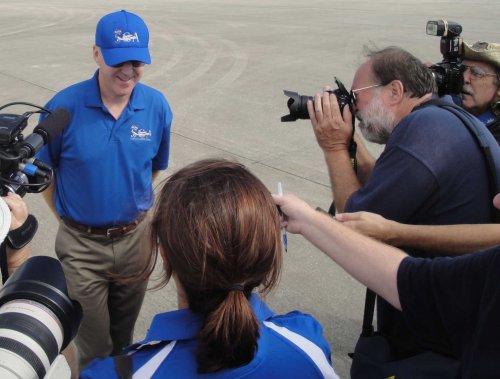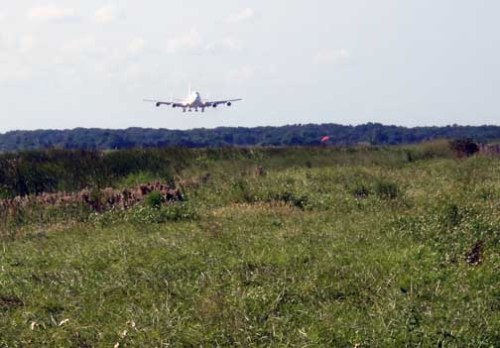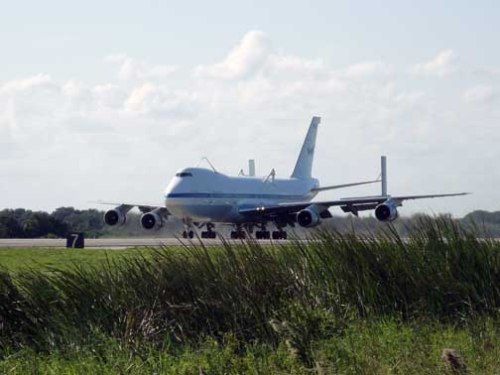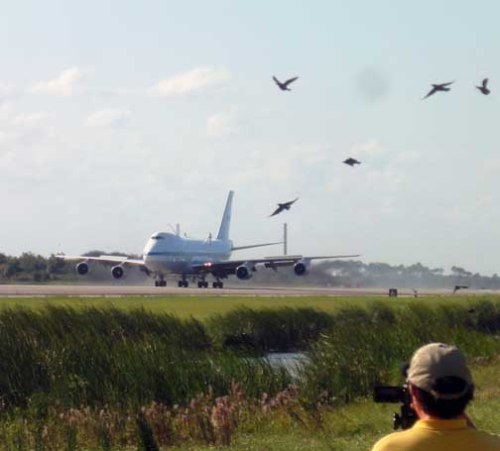NASA had two 747s which they used to carry the Space Shuttles. The primary 747-100 (N905NA)was acquired from American Airlines and its internal structure strengthened in 1974. A second 747-100 (N911NA) was purchased from Japan Airlines in 1989 and was a shorter range carrier. These aircraft in NASA-speak were “SCAs”, or Shuttle Carrier Aircraft. Both were parked at Edwards Airforce Base north of Los Angeles when not in use. N911NA has now been retired. N905NA is on its final flights. When it delivers the Endeavour to Los Angeles International Airport (scheduled for September 20, 2012), this airplane will be flown back to Edwards, parked and taken out of service. It is now expected that this airplane will be canibalized and not used again. No one has indicated any interest in saving her in a museum.
.
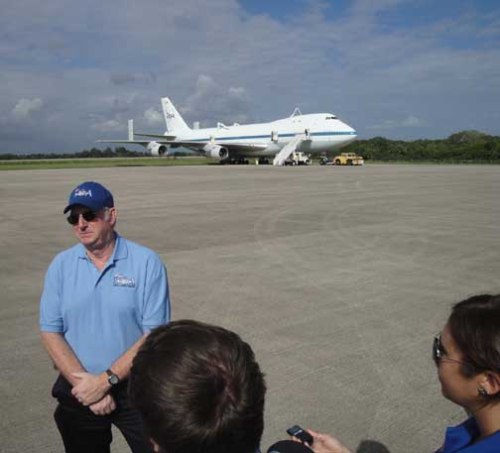
NASA Flight Engineer Henry Taylor stands in front of the 747-100 on Wednesday morning, September 12, 2012, on the tarmac at Kennedy Space Center, Florida. Taylor has flown the NASA 747-100s as a flight engineer for three decades, and he was flight engineer when NASA took delivery of the Endeavour. On Tuesday, September 11, 2012, he was flight engineer on the final eastward flight of NASA’s N905NA 747-100. He will remain flight engineer as this aircraft flies the Endeavour west to Los Angeles on what will be the last flight for both the Endeavour, and for NASA’s 747-100 SCA.
.
.

Pilot Jeff Moultrie, here and directly above, spoke with media on the tarmac at Kennedy Space Center on Wednesday, September 12, 2012. NASA invited selected media on board to tour the 747-100 on its final stop on the east coast. The Shuttle Endeavour will be placed on top N905NA on Friday, September 15 and was to depart KSC at first light on Monday, September 17, 2012.
.

Weight is a critical issue in transporting the shuttle, as is weather and altitude. Inside the 747-100 is empty. In the distance on the top of the cabin are several reinforcing struts to carry the weight of the shuttle which was attached to the top of the 747-100. Outside the skin of the 747-100 was also enhanced and connectors installed. The tail of the 747 also has extra vertical stabilizers. In all, however, the pilots say the 747 does not handle much different than a regular 747, except that extra care must be taken in banking and turning.
.
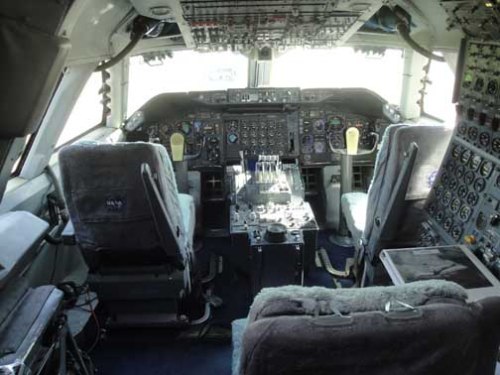
Two pilots and a flight engineer fly the 747. Additionally, sometimes a representative of the FAA is on board, but has no authority because the NASA 747s are experimental aircraft and the FAA has no authority over NASA. Because flights are often short (600 to 1,100 miles with the shuttle attached) there are no bunks to sleep in and only about 25 seats on the upper and main decks forward. They are all very comfortable first class seats, and the bathroom is huge. The 747s have a circular staircase between decks. Commercial airlines in the 1960s sometimes built a piano bar (with piano) on the upper deck for its first class passengers. How times have changed.
.
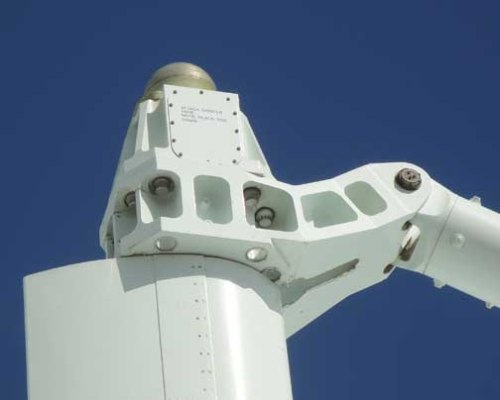
This is a closeup of one of the connectors on top of the 747. Note that it comes with instructions reminding those placing the shuttle on top of the 747 to put the “black side” where the insulating tiles are located down.
.

Pete Crow, Seine/Harbour® Productions, sits in the commander’s seat of NASA’s Shuttle Carrier 747-100, during its final stop in Florida where it picked up, and carried, the Shuttle Endeavour to Los Angeles and the California Science Center.
.
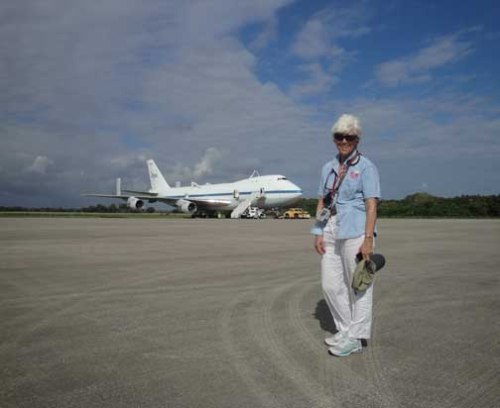
Carol Anne Swagler, The Grove Sun, Grove, Oklahoma, stands in front of NASA’s Shuttle Carrier Aircraft at Kennedy Space Center on September 12, 2012. Ms. Swagler is a veteran NASA reporter and has covered numerous launches of the shuttle, the Mars Science Laboratory, GRAIL, Space X and others. In the two weeks prior to this week-long NASA event she photographed the Republican and Democratic Conventions in Tampa and Charlotte. This was the final visit of NASA’s N905NA to the east coast and to KSC. After delivering the Endeavour to Los Angeles International Airport on September 20, 2012, the airplane was scheduled to be flown back to Edwards Air Force Base, parked, and junked.
Readers are reminded that this blog content and its photographs are jointly copyright 2012 by Seine/Harbour® Productions LLC, Studio City, California, and by the Peter Michael Crow Trust.
.
